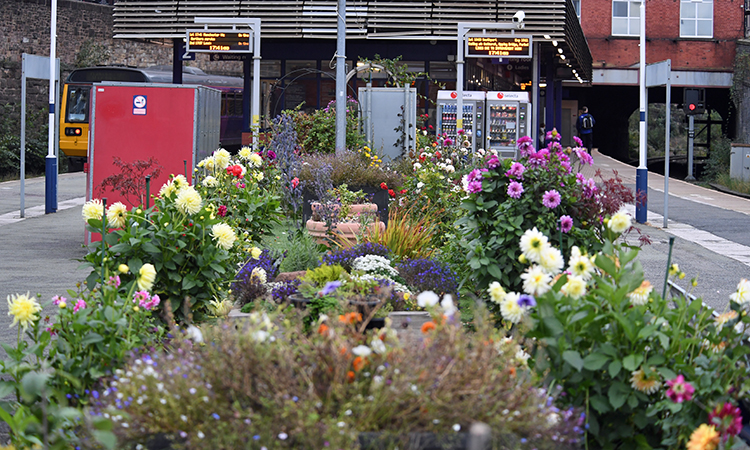All UK railway station managing companies commit to sustainability pledge
Posted: 28 April 2021 | Global Railway Review | No comments yet
Following the publication of the Sustainable Stations: Best Practice Guide, all station managing companies in the UK have pledged their commitment to making the country’s railway stations more sustainable.


Credit: Rail Delivery Group - Biodiversity at UK railway stations.
More solar panels, wildflower zones and electric vehicle charge points may be appearing soon at railway stations across the country as all rail companies responsible for managing railway stations in the UK have pledged their commitment to making stations more sustainable.
The pledge was made as the rail industry published a new Sustainable Stations: Best Practice Guide, which details ways in which train operators can meet this commitment in support of global goals of decarbonisation, reducing waste and supporting local plant and animal life. The document will also be used by train companies when agreeing future contracts.
Network Rail, which is responsible for managing 20 railway stations, including some of the nation’s biggest and busiest, has also committed to making their stations more sustainable by meeting targets set out in the Network Rail Environmental Sustainability Strategy.
The pledge, printed on the new Sustainable Stations Guide, reads: “In support of global efforts to decarbonise, reduce waste and increase biodiversity, we the undersigned, as the operators of Britain’s railway stations, are committed to making our stations more sustainable. In doing so, we will be informed by best practice set out in this guide and Network Rail’s Environmental Sustainability Strategy.”
Robert Nisbet, Director of Nations and Regions for the Rail Delivery Group (RDG), said: “Stations are at the heart of countless communities across Britain, and many have already undertaken incredible work to reduce waste, cut carbon and support wildlife. Rail is already a green way to travel, but we know that there is more that we can do and, through this pledge, rail companies have made it clear that they are up to the challenge.”
There are currently 2,563 railway stations across Britain, coming in many shapes and sizes, from big modern redevelopments to stunning examples of Victorian architecture, and even single platforms serving more rural villages. The guide offers advice on the different ways that stations can be more sustainable, with operators, transport bodies and the government agreeing which will be the most effective on a case-by-case basis as new management contracts are agreed.
The guide highlights best practice already employed at other stations across the country, including rainwater collection to cut water wastage at Birmingham New Street, solar panels at Accrington in Lancashire and dedicated wildflower zones at Perth to help local bee populations to recover.
Railway stations are estimated to cover more than 20km2 of land across Britain, an area around the size of Central London, and 85 per cent of people in the UK live within 5km of a railway station. Therefore, work to make them more sustainable will be a big step forward in support of climate action and local wildlife.
Ensuring that people return to rail travel following nationwide travel restrictions due to the pandemic will also be vital to secure a green economic recovery for the country from COVID-19 and avoid a spike in car use that would deal a hammer blow to Britain’s net-zero carbon emissions.
It is estimated that attracting people out of cars and onto trains by making fares simpler could add 300 million rail journeys over the next 10 years, preventing 1.2 million tonnes of CO2 emissions from cars, while investment in HS2 is expected to cut one million lorry journeys over a similar period by increasing space for rail freight on existing lines.






